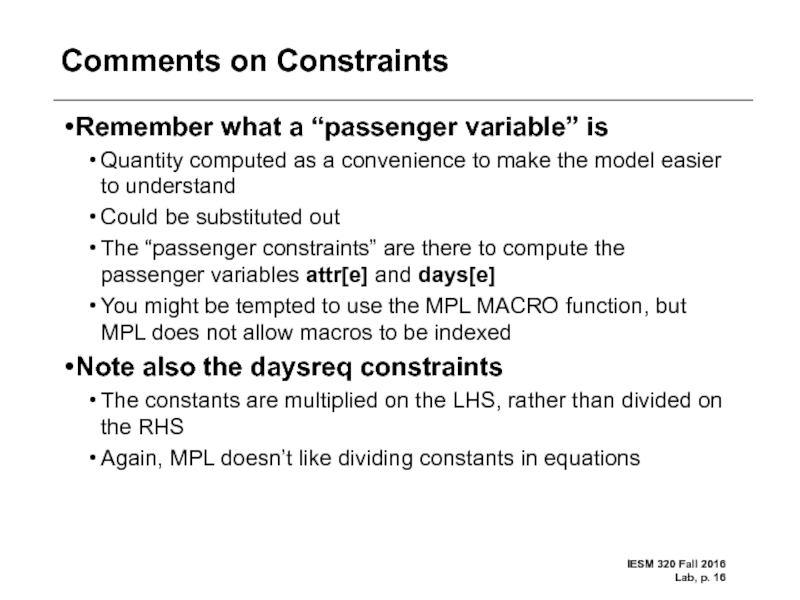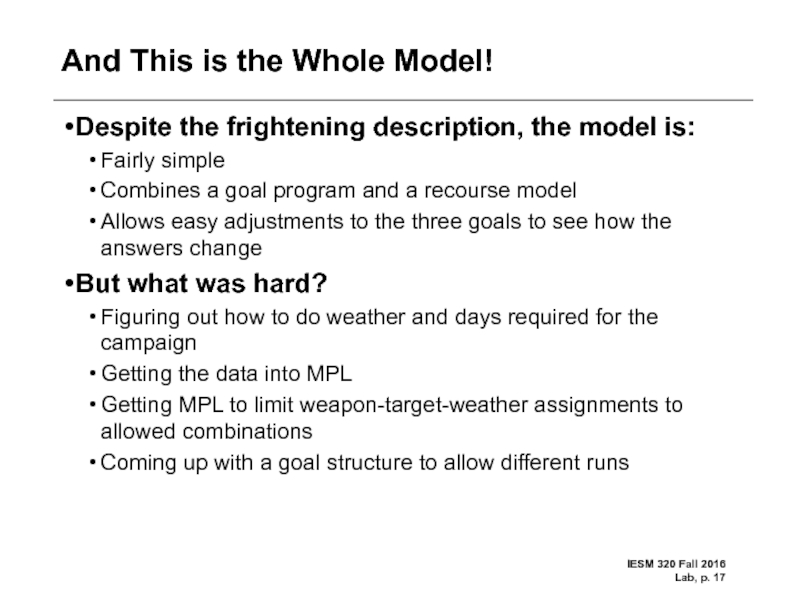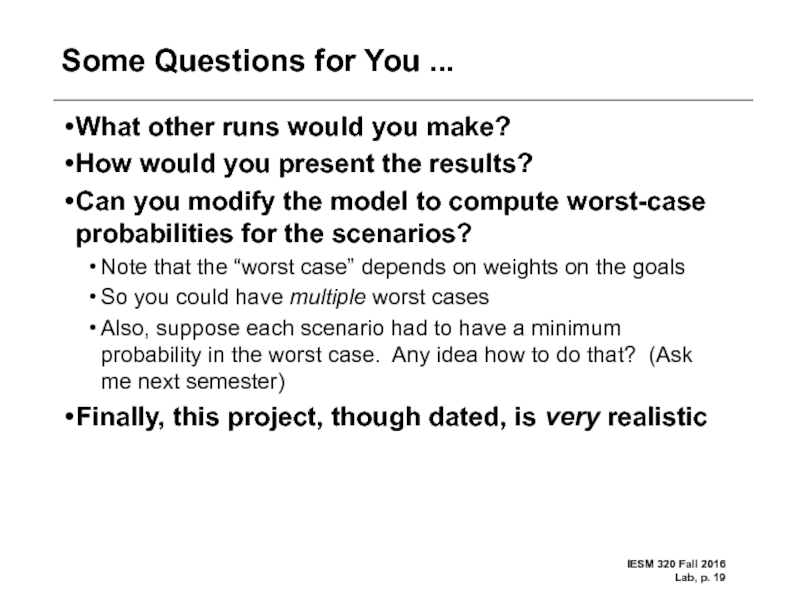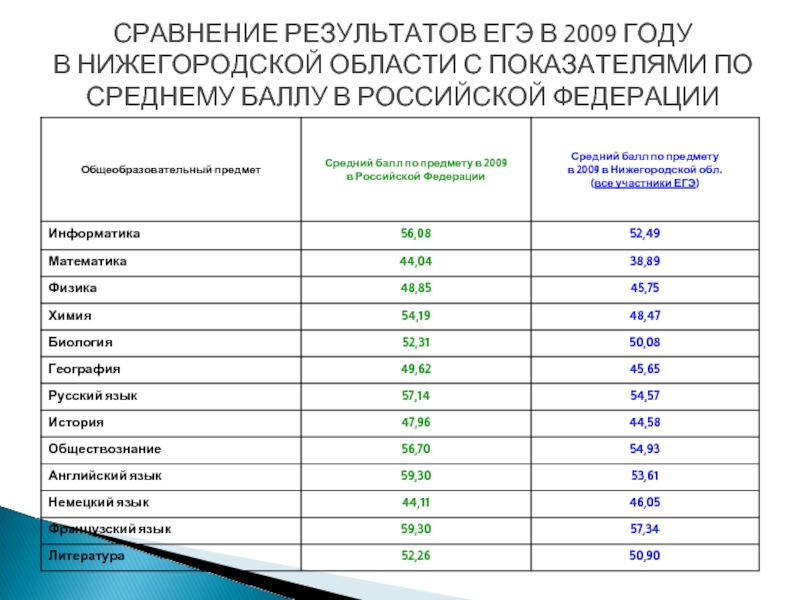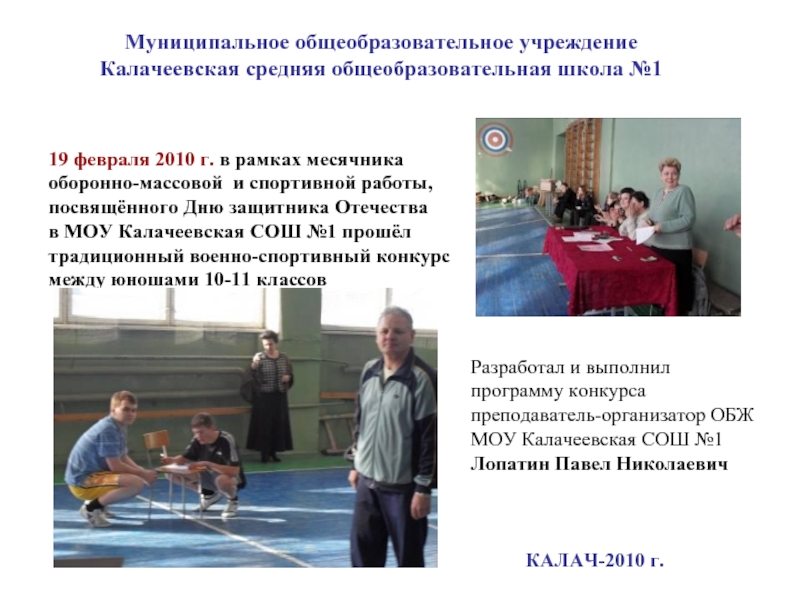- Главная
- Разное
- Дизайн
- Бизнес и предпринимательство
- Аналитика
- Образование
- Развлечения
- Красота и здоровье
- Финансы
- Государство
- Путешествия
- Спорт
- Недвижимость
- Армия
- Графика
- Культурология
- Еда и кулинария
- Лингвистика
- Английский язык
- Астрономия
- Алгебра
- Биология
- География
- Детские презентации
- Информатика
- История
- Литература
- Маркетинг
- Математика
- Медицина
- Менеджмент
- Музыка
- МХК
- Немецкий язык
- ОБЖ
- Обществознание
- Окружающий мир
- Педагогика
- Русский язык
- Технология
- Физика
- Философия
- Химия
- Шаблоны, картинки для презентаций
- Экология
- Экономика
- Юриспруденция
Lab Fall 2016 презентация
Содержание
- 1. Lab Fall 2016
- 2. First, Let’s Answer the Questions (1 of
- 3. First, Let’s Answer the Questions (2 of
- 4. How to Start? What’s the general form
- 5. Campaign Length and Weather (1 of 3)
- 6. Campaign Length and Weather (2 of 3)
- 7. Campaign Length and Weather (3 of 3)
- 8. Enforcing Weapon-Target Limitations Certain bombs only work
- 9. Next Step: Start Formulating I’ll show you
- 10. Multidimensional Sets I wanted the students to
- 11. Data There’s a lot of data in
- 12. Variables This is a recourse model, so
- 13. Modeling the Goals This is the second-hardest
- 14. A Setup for a Run What was
- 15. Constraints SUBJECT TO kills[e,c,h] WHERE
- 16. Comments on Constraints Remember what a “passenger
- 17. And This is the Whole Model! Despite
- 18. Runs and Answers The spreadsheet “Project Cases.xls”
- 19. Some Questions for You ... What other
Слайд 1Overview
This is a project I assigned a few years ago
Read the
What are the objectives?
What is to be decided – what are the variables?
Which parameters are set? Which parameters will have to be varied (sensitivity analysis)?
Look at the provided input data
Note that it gives most of the necessary sets and data
It is in another language, so you’ll have to translate it to MPL
There’s a fair amount if it, though, and it has multiple dimensions
Слайд 2First, Let’s Answer the Questions (1 of 2)
What are the objectives?
Minimize
Minimize the number of days to kill the target set
Meet investment limit (which is subject to discussion)
We will have to decide how to trade between these three objectives, so we have a goal program
What are the variables?
The number of weapons to buy
The assignment of weapons to targets in each scenario
The assignment of sorties (one aircraft flying to one target) in each scenario
We might need other variables too
Слайд 3First, Let’s Answer the Questions (2 of 2)
Which parameters will have
Overall investment: opinion ranges from $35M - $200M
Probabilities of the 3 scenarios
Fortunately, people seem to agree on everything else
However, the fact that certain things have to be varied may affect the design of the model
Слайд 4How to Start?
What’s the general form of the model?
Multiple scenarios =>
Multiple goals => some sort of goal program
Final model will have to combine goals with two-stage recourse formulation
However, we need to work on some things with the basic 1-scenario problem
How do we determine the length of the bombing campaign?
How do we enforce all the conditions on using certain bombs in certain weather conditions?
What variables will we need to represent all this?
Слайд 5Campaign Length and Weather (1 of 3)
This is probably the hardest
Take the SSC scenario
It has bad weather 30% of the time (proportion 0.3)
We can fly 90 sorties per day in this scenario
If we need to fly 270 sorties in bad weather, it will take 270 / (90*0.3) = 10 days on average to do it
But why fly in bad weather at all?
We still want to minimize the time to conduct the campaign
Not flying in bad weather increases campaign length by at least 30% (and gives the enemy an unearned advantage)
Слайд 6Campaign Length and Weather (2 of 3)
Here’s a question the students
There are 6 target types ( 3 collateral damage X 2 hardness)
Does each target type have to be killed in proportion to the weather?
Example: SCC has 120 soft targets with strict collateral damage requirements. Do we have to kill 40% in good weather (48), 30% in fair weather (36), and 30% (36) in bad weather?
Answer
No, these are fixed targets (e.g., buildings)
We can attack them whenever we want
We do NOT need to constrain the number attacked to weather proportions
However, we still need to track the TOTAL number of sorties flown in various weather conditions
An aside
You could argue that you need to constrain attacks to weather, because the enemy might use certain buildings on certain days
Слайд 7Campaign Length and Weather (3 of 3)
So here’s the sub-model
days required
We need this constraint for every weather condition
So, days required will be the maximum
Another question: can sorties assigned be fractional?
Answer: yes, we are working with expected values for kills and attrition
Example: A GPS PK = 0.6 => 1/0.6 = 1.67 bombs on average required for kill
2 GPS bombs per sortie / 1.67 bombs required => 1.2 sorties required on average to kill the target
Since those numbers are fractional, it is OK to use fractional (continuous) sortie assignments
We are treating the sortie assignments as expected values
Слайд 8Enforcing Weapon-Target Limitations
Certain bombs only work in certain weather states
LGB (laser-guided
GPS bomb works in all weather states, but is less accurate and requires more on average to get a kill
Certain bombs have unacceptable collateral damage
Enormous consideration in modern warfare
Unguided weapons can have large miss distances due to wind and often hit unintended targets
However, guided weapons are much, much more expensive
So, the assignment variables ...
Must be a function of scenario, target type (hardness and collateral damage), and weather
Слайд 9Next Step: Start Formulating
I’ll show you this via MPL code
As usual,
INDEX
e := (MTW1,MTW2,SSC) {theater}
b := (soad,gps,lgb,unguided) { weapon type }
c := (strict, medium, none ) {collateral damage category }
h := (hard, soft ) { target hardness }
w := (good, fair, bad ) { weather state }
Слайд 10Multidimensional Sets
I wanted the students to use multidimensional sets to define
Here are the sets I defined, in MPL:
{ allowable weapon and weather combinations }
wxw[b,w] := (soad.good, soad.fair, soad.bad,
gps.good,gps.fair,gps.bad,lgb.good,
unguided.good, unguided.fair );
{ allowable weapon and collateral damage combinations }
cda[b,c] := (lgb.strict, lgb.medium, lgb.none,
soad.medium, soad.none,
gps.medium, gps.none,
unguided.none )
Слайд 11Data
There’s a lot of data in this model
One of the aims
See the MPL code for all of it; but here are examples
{ target data by scenario, collateral damage, hardness }
TGTS[e,c,h] := [MTW1,strict,hard,200,
MTW1,strict,soft,400,
MTW1,medium,hard,400,
PK[b,e,h] := [soad,MTW1,soft,.86,
soad,MTW1,hard,.60,
soad,MTW2,soft,.77,
ATR[e,b,w] := [ MTW1, soad, good, .0001,
MTW1, soad, fair, .0001,
MTW1, soad, bad, .0001,
MTW1, lgb, good, .005,
MTW1, lgb, fair, .007,
Слайд 12Variables
This is a recourse model, so we have
Initial decisions: this
Everything else: these are decisions made in each scenario (indexed by e)
Here are the variables I used
Note the use of the multidimensional sets to limit allocation variables to allowed combinations
This is a good way to use the MPL “IN” operator
VARIABLES
bought[b]; { Weapons bought }
attr[e]; { Attrition by theater }
days[e]; { Days to prosecute campaign by theater }
{ Sorties allocated by scenario, weapon, target damage/hardness, and weather }
sorties[e,b,c in cda, h, w in wxw];
Слайд 13Modeling the Goals
This is the second-hardest part of the project
And, there
There are 3 factors
Total aircraft attrition (losses)
Expected days to complete the campaign
Money spent on weapons
I used a weighted objective, but:
I knew I would make several runs
I could get a “near-preemptive” goal program by using large and small weights
I could control the budget by a simple constraint, and easily test many budgets
Слайд 14A Setup for a Run
What was I looking at here?
Wanted mostly
Gave a small weight to attrition to make sure that it was considered (break ties among near-identical solutions)
I did not weight the cost; I handled that via a budget constraint
Note the use of the MPL MACRO function
DAYWGT := 1;
ATTRWGT := 0.0001;
COSTWGT := 0;
MACRO
bcost:=sum(b: COST[b]*bought[b]);
MODEL
Min weighted = DAYWGT*SUM(e: PROB[e]*days[e]) +
ATTRWGT*SUM(e: PROB[e]*attr[e]) +
COSTWGT*bcost;
bcost < BUDGET;
Слайд 15Constraints
SUBJECT TO
kills[e,c,h] WHERE (TGTS[e,c,h] > 0): { Kill constraints
SUM(b,w: PK[b,e,h]*LOAD[b]*sorties[e,b,c,h,w]) > TGTS[e,c,h];
buys[e,b]: { Buy and inventory constraints - by scenario }
SUM(c,h,w: LOAD[b]*sorties[e,b,c,h,w]) < INV[b] + bought[b];
expattr[e]: { Expected attrition by scenario - passenger constraints }
attr[e] = SUM(b,c,h,w: ATR[e,b,w]*sorties[e,b,c,h,w]);
daysreq[e,w]: { Days required by scenario - passenger constraints }
SRTD[e]*WX[e,w]*days[e] > SUM(b,c,h: sorties[e,b,c,h,w]);
bcost < BUDGET; { Total spent on weapons }
BOUNDS
bought[b] < MAXBUY[b];
Слайд 16Comments on Constraints
Remember what a “passenger variable” is
Quantity computed as a
Could be substituted out
The “passenger constraints” are there to compute the passenger variables attr[e] and days[e]
You might be tempted to use the MPL MACRO function, but MPL does not allow macros to be indexed
Note also the daysreq constraints
The constants are multiplied on the LHS, rather than divided on the RHS
Again, MPL doesn’t like dividing constants in equations
Слайд 17And This is the Whole Model!
Despite the frightening description, the model
Fairly simple
Combines a goal program and a recourse model
Allows easy adjustments to the three goals to see how the answers change
But what was hard?
Figuring out how to do weather and days required for the campaign
Getting the data into MPL
Getting MPL to limit weapon-target-weather assignments to allowed combinations
Coming up with a goal structure to allow different runs
Слайд 18Runs and Answers
The spreadsheet “Project Cases.xls” on Moodle shows the cases
17 combinations of budget, scenario probabilities, and weights on attrition and days
This was more of an “exploratory analysis” to see broad trends
Large variations in answers
10 – 22 days for campaign, 16 – 24 aircraft lost for MTW-2
GPS bomb buys range from 0 – 2788
But some things don’t change ...
We never buy any new unguided weapons
Little variation in MTW-1 days for campaign, SSC attrition
Overarching conclusion: how much do you want to spend to improve MTW-2 outcomes?
Слайд 19Some Questions for You ...
What other runs would you make?
How would
Can you modify the model to compute worst-case probabilities for the scenarios?
Note that the “worst case” depends on weights on the goals
So you could have multiple worst cases
Also, suppose each scenario had to have a minimum probability in the worst case. Any idea how to do that? (Ask me next semester)
Finally, this project, though dated, is very realistic

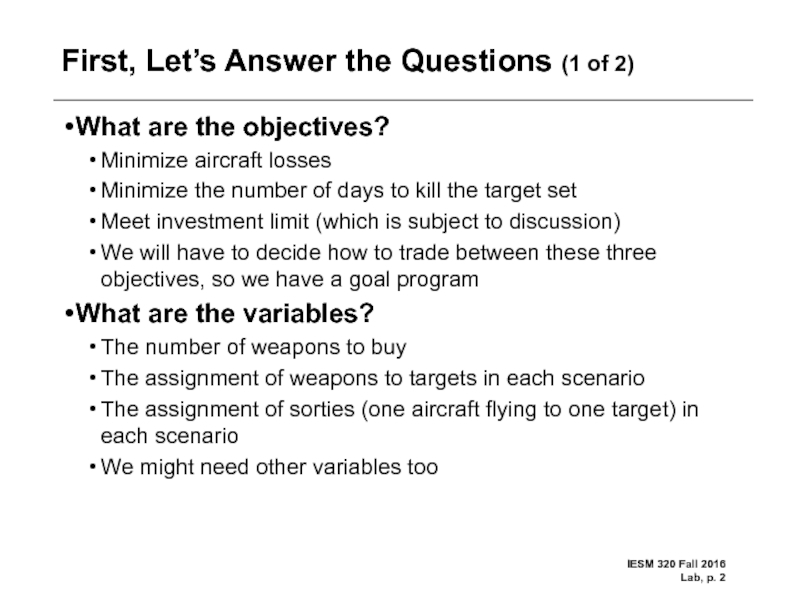
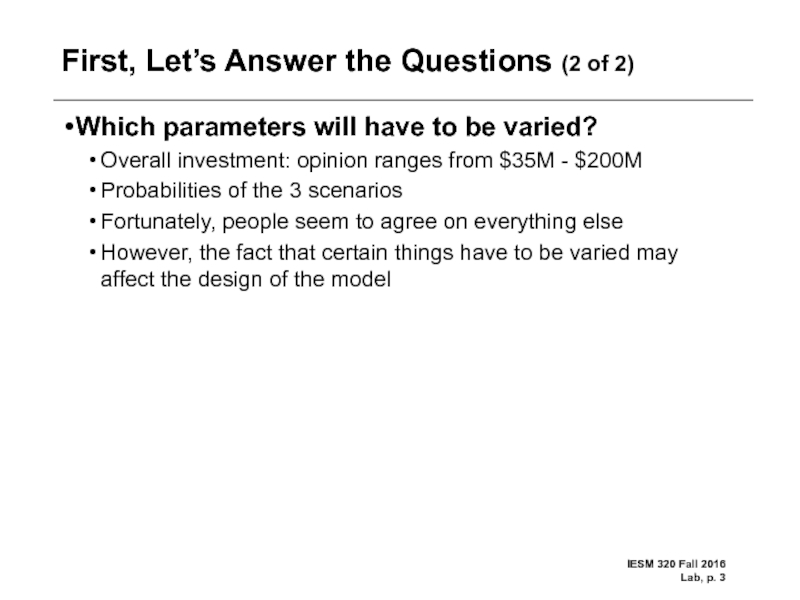
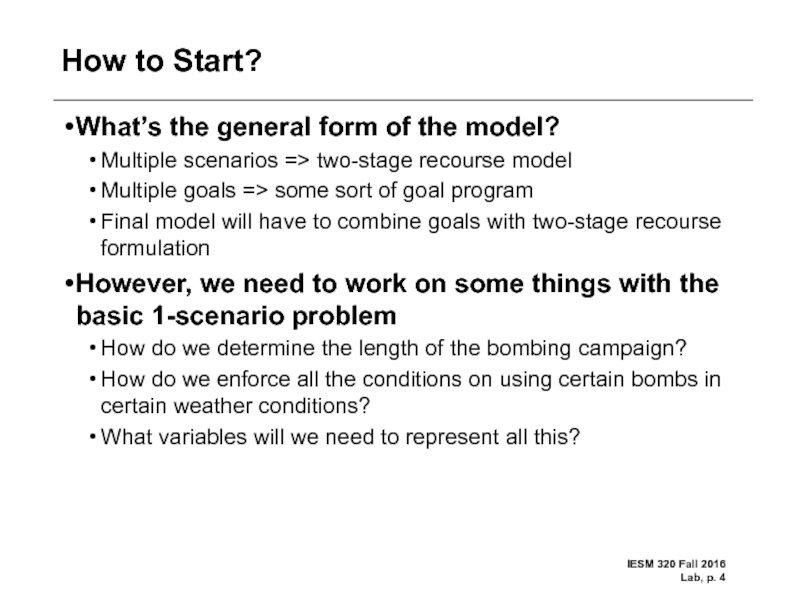
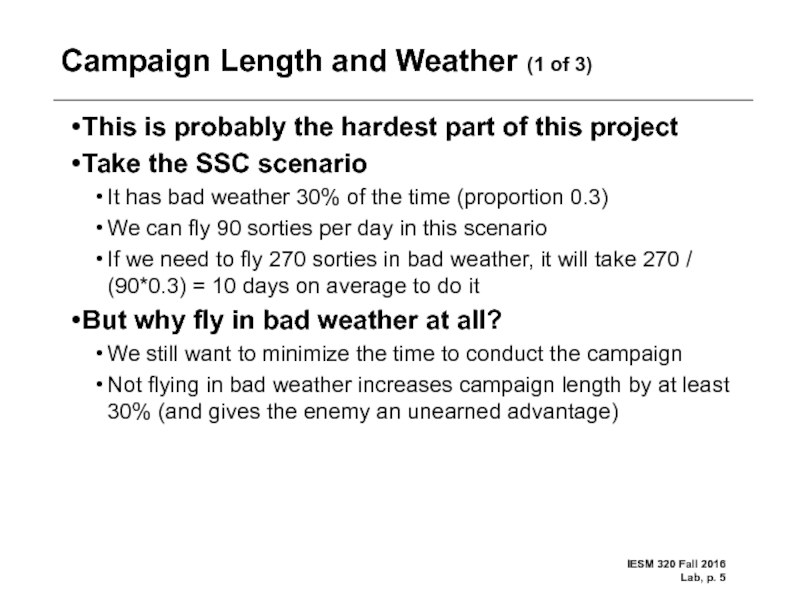
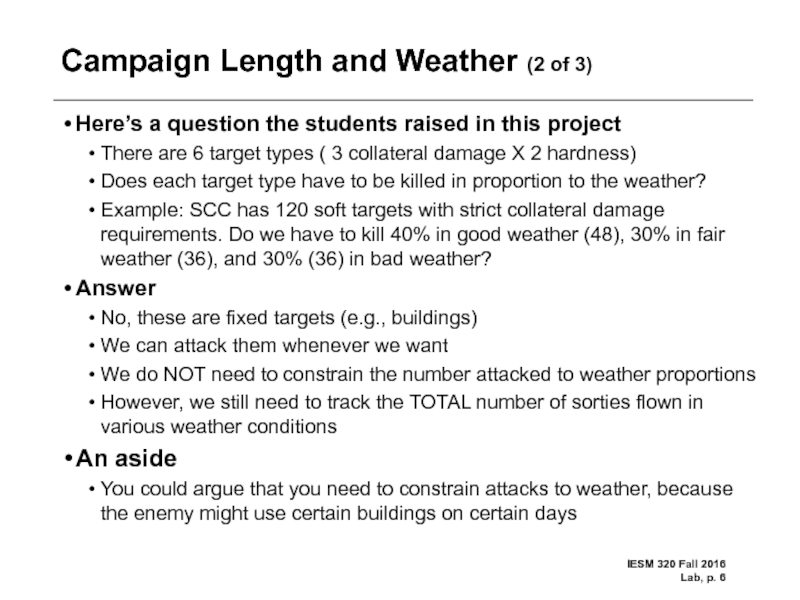
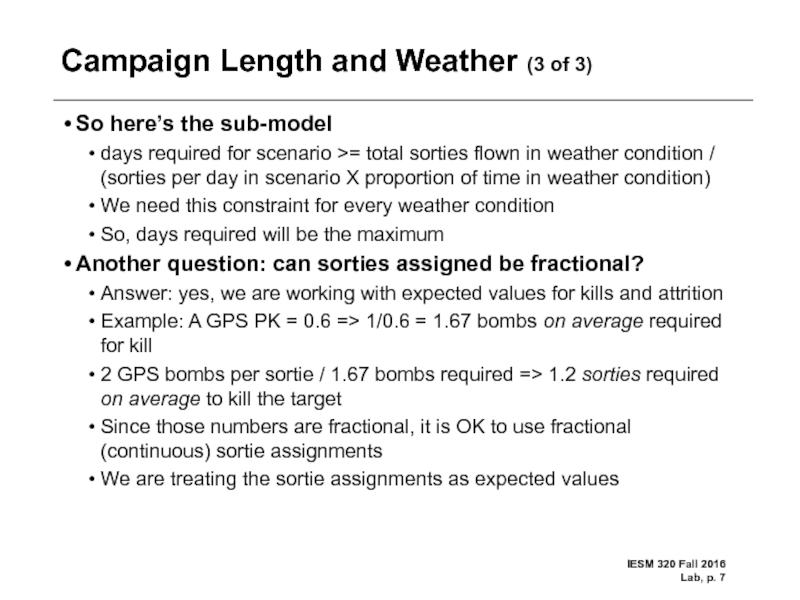
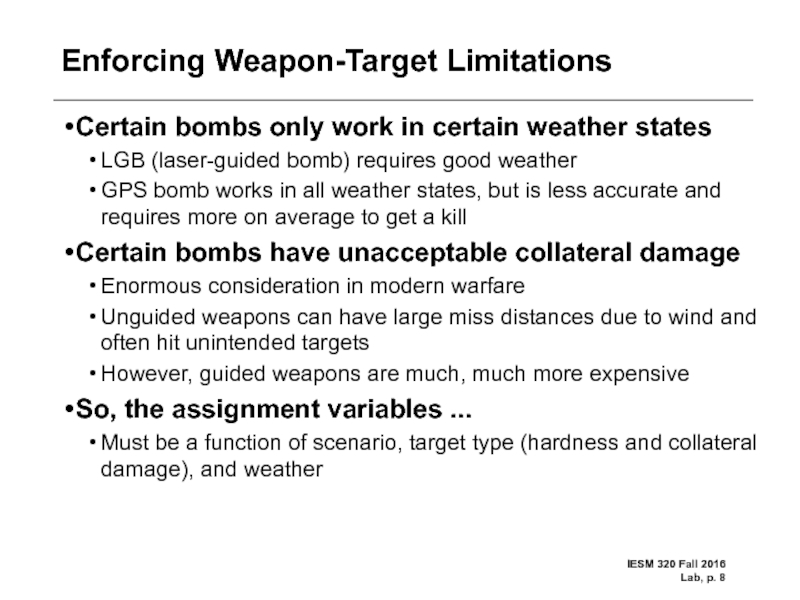
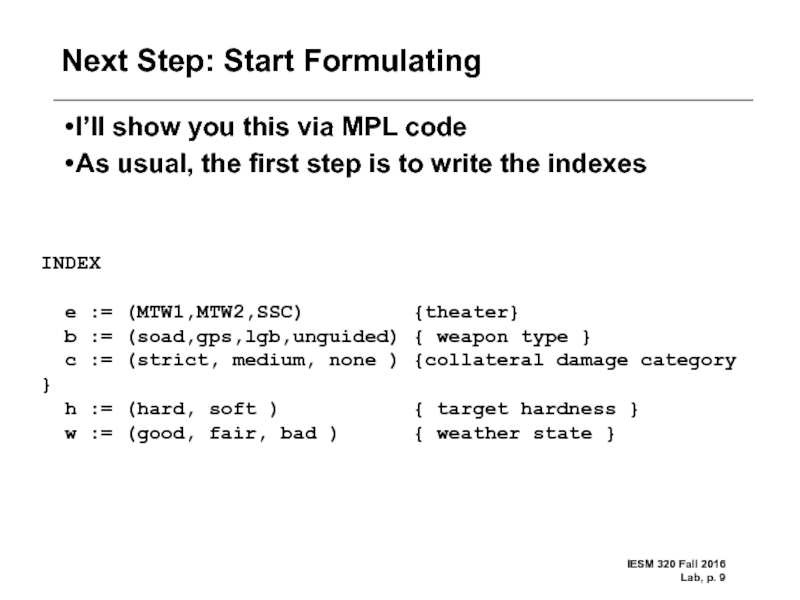
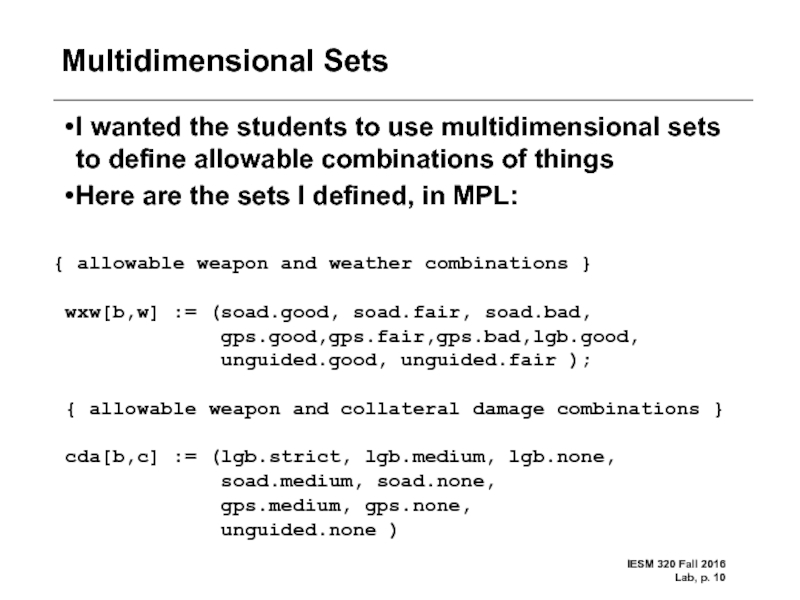
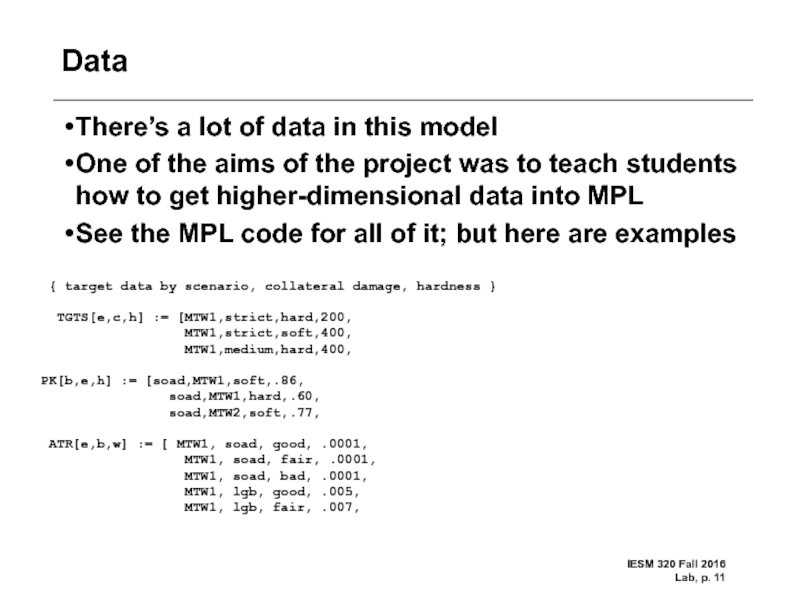
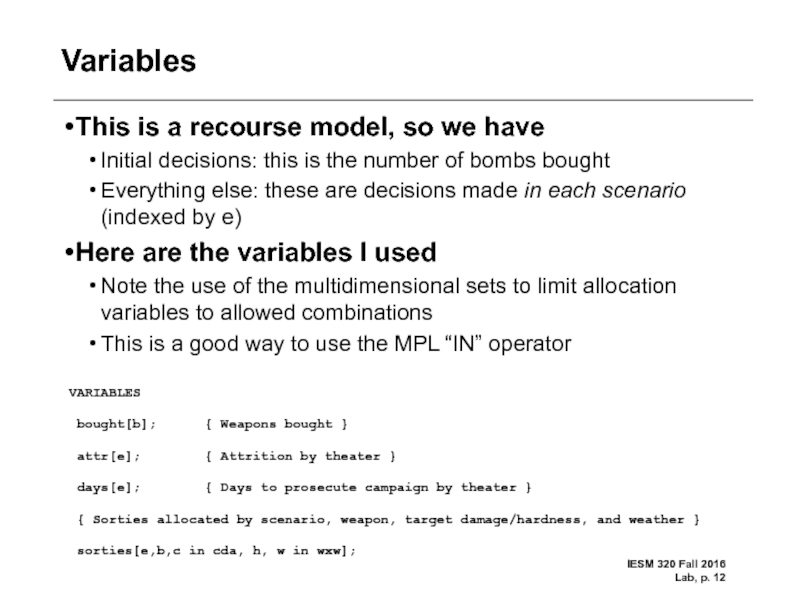
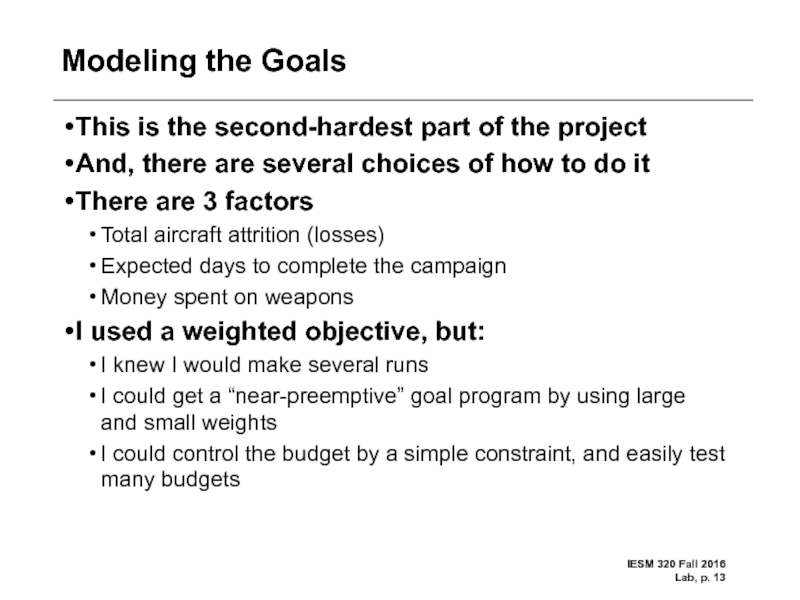
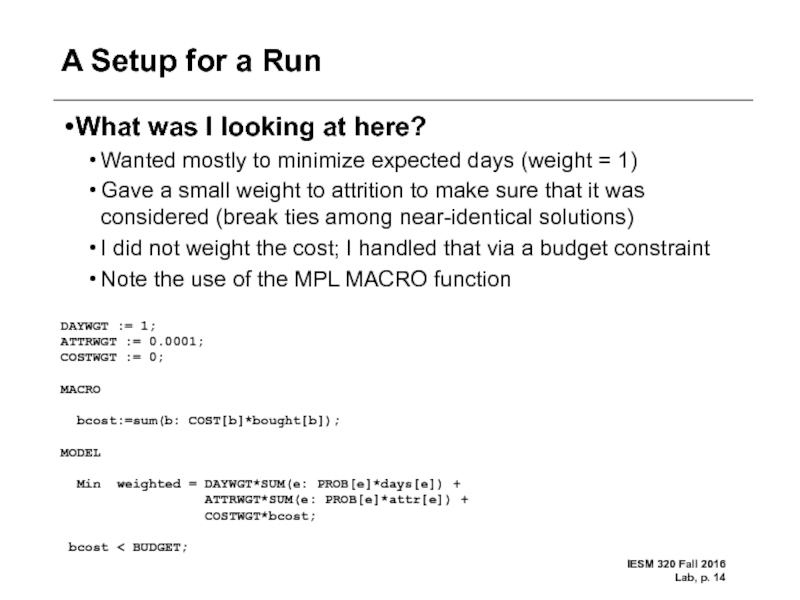
![ConstraintsSUBJECT TO kills[e,c,h] WHERE (TGTS[e,c,h] > 0): { Kill constraints } SUM(b,w: PK[b,e,h]*LOAD[b]*sorties[e,b,c,h,w]) > TGTS[e,c,h];](/img/tmb/4/368046/afc7a651327f8511ce1d9d2d6f8165f4-800x.jpg)
